Developing Processes for Ideas and Information
The aim of this portfolio is to develop and implement processes to manage ideas and information including:
- communicated information to support others to achieve work responsibilities
- facilitated employees’ contributions to consultation on work issues
- provided feedback on the outcomes of consultations
- resolved issues raised or referral to relevant personnel
- established and/or implement policies to ensure that the organisation’s cultural diversity and ethical values are adhered to
Flowcharts have been designed to illustrate the process in managing these ideas.
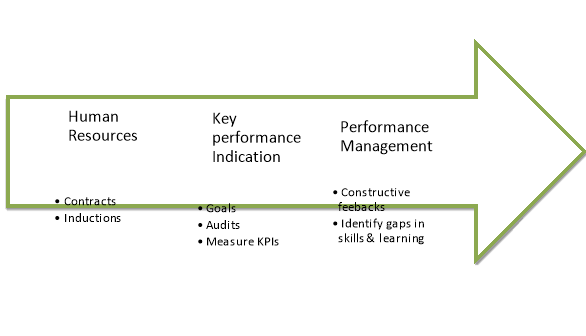
1.1 Diagram illustrating communicated information to support others to achieve work responsibilities

1.2 Diagram illustrating facilitated employees’ contributions to consultation on work issues
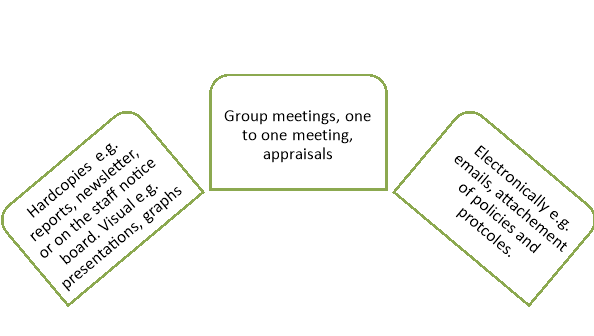
                1.3 Diagram illustrating provided feedback on the outcomes of consultations
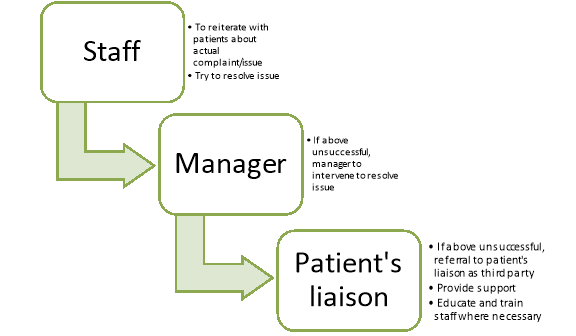
1.4 Diagram illustrating the process from the resolved issues raised or referral to relevant personnel
1.5 Refer to appendix 1 &2 : Policies to ensure that the organisation’s cultural diversity and ethical values
- Code of ethics for nurses, consumers, colleagues, community
- Equal Opportunity Act 2010
PORTFOLIO 2
This section aims to provide information on how leadership through our own behaviour and professional conduct can promote trust within the organisation and with our external contacts.
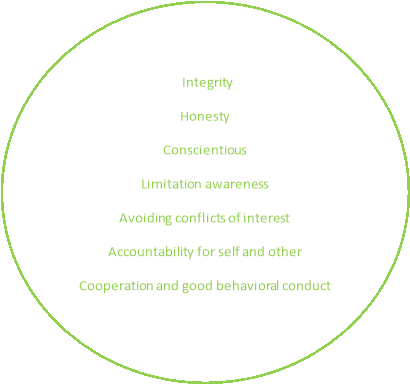 Adjusting our own interpersonal communication style to meet the organisation’s cultural diversity and ethical environment planned for, and manage, the use of networks to support identifiable outcomes for the team and the organisation is necessary.
Adjusting our own interpersonal communication style to meet the organisation’s cultural diversity and ethical environment planned for, and manage, the use of networks to support identifiable outcomes for the team and the organisation is necessary.
2.1 Diagram illustrating professional conduct to promote trust in the organisation and externally
PORTFOLIO 3
This section aim to illustrate processes and systems to manage difficulties including:
- identifying and resolving conflicts and other difficulties according to organisational policies and procedures
- planning how to address difficulties
- Providing guidance, counselling and support to assist co-workers in resolving their work difficulties
- explained how systems, policies and procedures can support the development of effective work relationships focusing on interpersonal styles, communications, consultation, cultural and social sensitivity, networking and conflict resolution

SCENARIO
Sandra and I have the same level of experience on the ward. Sandra has taken a new role on the medication committee. One on shift, the manager elected me to be the nurse in charge and Sandra didn’t appreciate the fact she wasn’t chosen to do so. As the evening progresses, Sandra’s attitude was abrupt and inappropriate. Below is the conversation that occurred
Sandra said: ‘Can you sign this phone order with me’
I replied      : ‘I haven’t heard the order, I can’t sign an order I haven’t heard unfortunately’
Being on the medication committee, Sandra is well aware that signing an order without evidence is legally incorrect.
Sandra sighed: ‘You always make things difficult’
I replied: ‘ I’m sure you do understand that you are asking me to do something beyond my scope of practice and which is against the policy of the hospital, you are well aware of the implications’
I reiterated the fact that we are breaching the policy if we sign an order that hasn’t been clarified by the doctor with 2 nurses.
Sandra was more upset and replied: ‘Well then I’ll ask someone else to do it for me’
I replied: ‘I suggest you contact the doctor and we both listen to the order’
I distanced myself from the rudeness and subjectivity and offered a solution
Sandra refused and said: ‘No point, I just need you to sign, I’ve already given the medication’
I was shocked by Sandra’s action and phoned the doctor who gave the order, but half the dose of what Sandra administered. At this stage, I know I had to do an instant performance review, as the patient’s care and safety was the priority. I called Sandra in the office.
I asked: ‘ You have been chosen to be on the medication committee because you are very well informed of the current policy and you always strived for the patient’s safety and care. However, what happened today surprised me and you have administered a medication not prescribed and the wrong dose. You then insisted that I take accountability for it by signing for it. Why did you react as such?’
Sandra sighed again and replied ‘To be honest, I got offended that I wasn’t chosen to be in charge today’
I asked: ‘Do you understand why you weren’t in charge?’
Sandra said: ‘No’
I replied: ‘Well, because I was here last night and I know all the patients so for best continuum of care that is why the manager chose me’
Sandra was embarrassed and said: ‘Oh! Is that why, now I feel awful!’
I explained: ‘You are as competent as I am but today’s decision is justified. However, you know the implications of your action and I would like you to take responsibility and do an incident report about the medication error, as per the hospital policy’
Sandra agreed and apologized that she allowed herself to breach the policy because she was upset. Actions were taken by human resources and Sandra was put on a performance management with supervision and training.
Below is a flowchart to illustrate the process about managing the difficulties that arose with Sandra
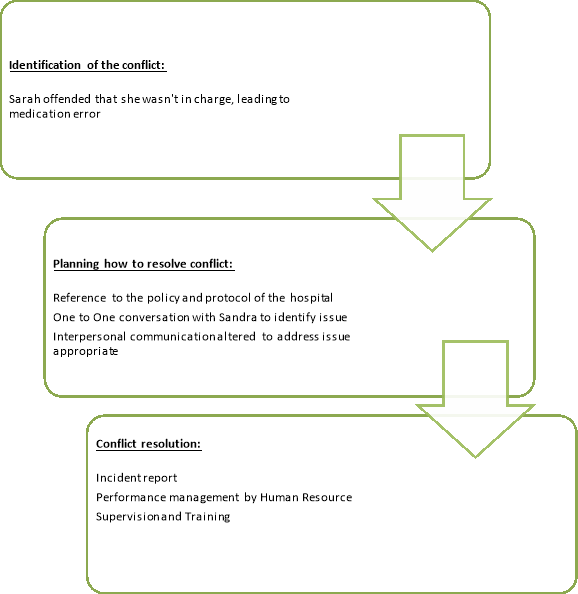
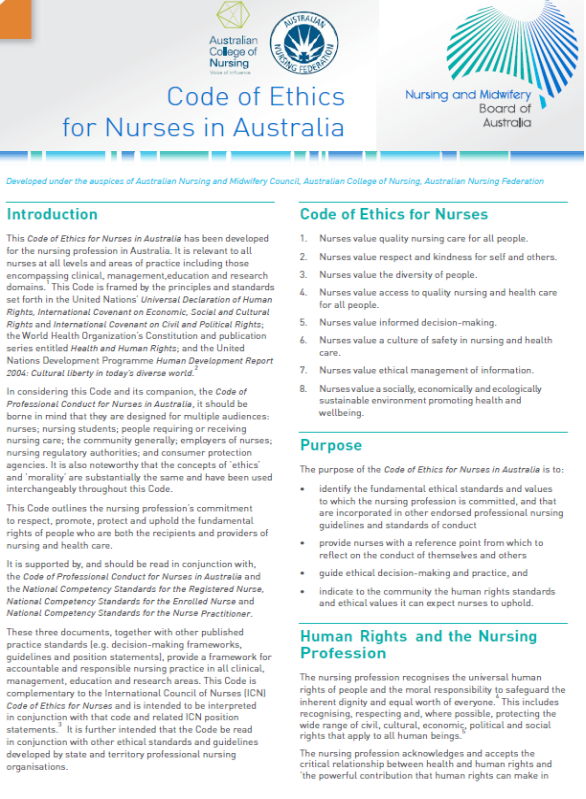
Appendix 1: Codes of Ethics for nurses, Retrieved 3 March 2017 from www.nursingmidwiferyboard.gov.au/
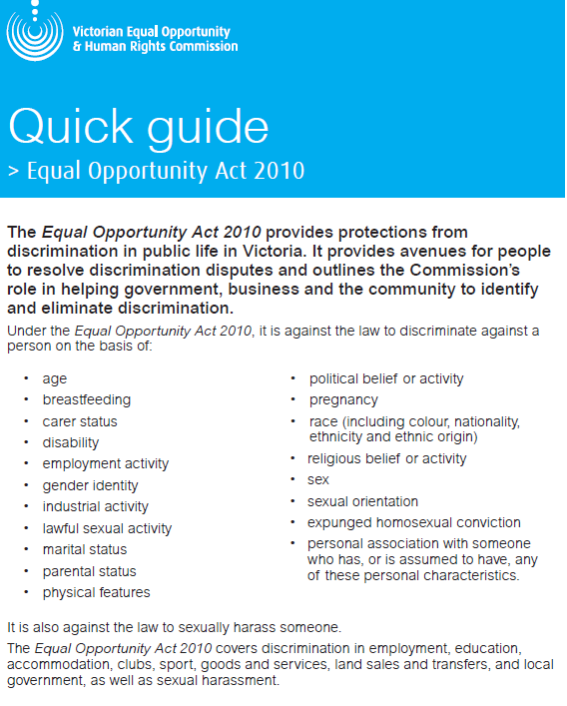
Appendix 2: Equal Opportunity Act 2010, Retrieved 3 March 2017 from www.humanrightscommission.vic.gov.au